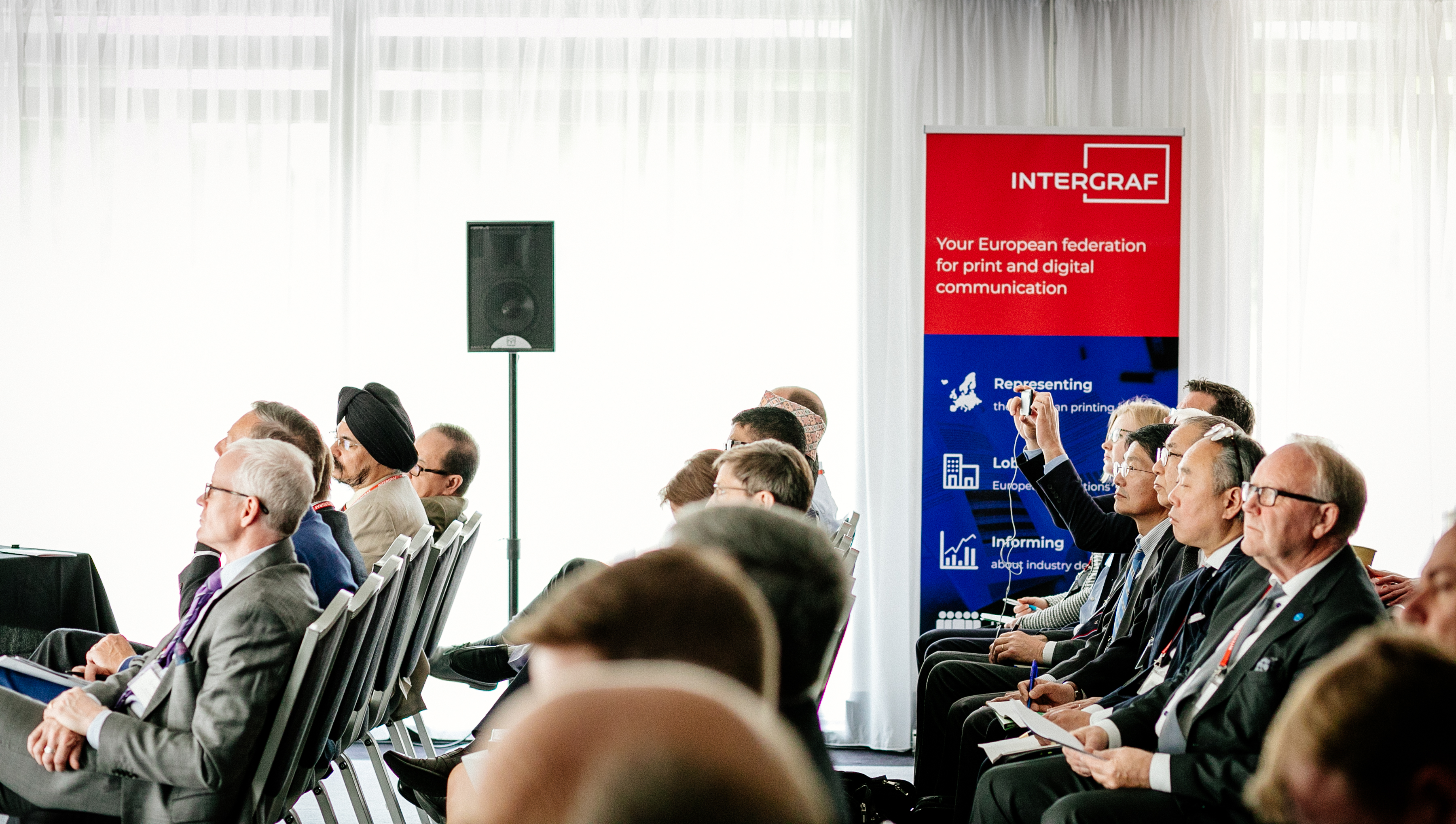EU LEGISLATION DOES NOT PROTECT CONSUMERS “ONLINE AND OFFLINE”
9 December 2022
European legislation does not protect the right of consumers to choose to be contacted offline. Until EU consumer law simultaneously focuses on online and offline fairness, a substantial number of consumers will be treated unfairly. Taking a ‘digital only’ or ‘digital first’ approach is not neutral – it threatens existing (offline) rights and can increase exclusion. Existing European digital rights and principles fail to address this, creating a loophole for companies and service providers to treat their offline customers unfairly. Consumers in Europe need to have their right to choose between physical and digital communications protected by law. Such protections can – and should – be provided in the Consumer Rights Directive.
Digital is not neutral
There is a prevalent and incorrect assumption that digital is neutral, and it permeates EU policy about the digital transition. This Public consultation for the Fitness Check of EU consumer law on digital fairness is the latest in a long line of EU initiatives that build on such an assumption. But it is not possible to build a truly fair digital environment if the option to be contacted offline is not also maintained (especially when it comes to consumer rights). Digital is not neutral because online spaces automatically exclude people and create additional levels of inequality between those who have the skills and tools to be online and those who do not. Strengthening the digital rights of consumers is imperative, but we must not lose sight of the many millions of people who are not online – whether by choice or necessity; some or all the time. Everybody has the right to be included and treated fairly by the companies who provide them with goods and services.
To be truly inclusive (or “fair”), horizontal legislation such as the Consumer Rights Directive must consider non-digital forms of communication as part of the full consumer experience. Not doing so creates a loophole in European consumer law, through which companies and service providers routinely treat consumers unfairly. A clear line cannot be drawn between those who use digital technologies, and those who do not. Most people are somewhere in between. And since all consumers should be protected, the only way to secure this is to legally protect non-digital forms of communication, alongside promoting the digital transition and uptake of digital skills.
EU consumer legislation does not protect everyone
Everything – from bills, invoices and statements to educational materials and government documents – is rapidly moving online without any legal requirement to also continue to provide equivalent printed communications for those who need or choose them. Some people use digital technologies every day, others every week, month, or year. Some do not use them at all. Reasons for this vary. Some may not have an internet connection, or a fast enough one. Others may not be able to access or have the budget to buy a (suitable) digital device, or the skills to use it. Some want the freedom to choose how to interact with companies and service providers. A disproportionate amount of people who are already at risk of exclusion lose out when “fairness” is only considered in digital interactions – including older people, people with low or no digital skills, carers, those who are financially insecure, unemployed people, and people with disabilities. Such groups make up a huge portion of the European population.
Crucially, according to the European Commission’s own statistics, only 54% of Europeans aged 16-74 possess basic digital skills (DESI, 2022). This has not enduringly improved for almost a decade. Thus, for 46% of the European population aged 16-74, data could either not be collected or they possess no or very low digital skills. Meanwhile, people older than 74 are not even included in Eurostat’s dataset on digital skills – despite possessing said skills at an even lower rate than their younger cohorts. This is not only a generational issue. There is a disparity between rural and urban areas (only 46% of people aged 16-74 from a rural area have basic digital skills), and according to the Commission “being of young age does not determine digital skills, as growing up in a digital world does not necessary make you digitally savvy”. Education, employment, and other socioeconomic factors also come into play. Even in Finland, the current frontrunner, the percentage of people aged 16-74 with at least basic digital skills continues to sit below the Commission’s headline 2030 target of 80% (see Europe's Digital Decade). And even if this ambitious target could be reached in every Member State, 20% of adults aged 16-74 (currently over 66 million people) would still be left behind – and let us not forget the further tens of millions of Europeans above age 74 who are completely missing in the data.
Companies do not consider inclusion above cost-saving
Companies and organisations will not universally introduce safeguards without a clear incentive to do so – something that does not currently exist. Digital communications are generally cheaper for companies because printing costs are shifted onto consumers, so as a cost-saving measure Europeans are being pushed more and more online by the companies and service providers they interact with (see Keep Me Posted EU). Fairness, inclusion, and freedom of choice are not being considered. They will not be considered over cost unless companies are mandated to do so by law. Consumers who choose physical over online communications are often charged additional fees; many are even forced to go digital without their consent and may have difficulty reverting to offline. In such cases, the digital transition creates additional divisions and inequalities that did not previously exist.
Existing consumer policy upholds the (unfair) status quo
The very first sentence of the consultation document on digital fairness states that the European Commission will “analyse whether additional legislation or other action is needed in the medium-term in order to ensure equal fairness online and offline” (emphasis added). This was a good start. However, in the next sentence, and then throughout the rest of the text, only “digital fairness” is focused on. This is a missed opportunity. As digital communications are now the default, ensuring “equal fairness online and offline” can only happen if non-digital forms of communication are protected by law. It cannot just be assumed that consumers’ rights offline are not affected by the digital transition.
The Consumer Rights Directive classifies paper communications as a “durable medium” (paragraph 23) and provides for the delivery of information on paper when it comes to contracts (see, for example, Chapter 3 Article 7). However, there is no broader protection of paper communications. Consumers who choose to receive certain communications on paper (e.g., invoices; bills; statements; letters) may not be able to access the information they need – at all, or without an additional cost. This gap in the legislation allows for a substantial number of European consumers to be treated unfairly.
Our recommendations
Failing to address the role of printed communications when discussing digital fairness legitimises treating people who prefer to be contacted in print differently. Excluding print from this dialogue is not neutral because the digital transition affects offline rights. To ensure that Europe’s digital transition is inclusive, print should always be considered in conversations about the digital transition so that it remains truly fair. Digital skills and tools can (and should) be promoted and improved, while companies are simultaneously mandated to preserve printed communications for those who need or choose them.
We recommend amending the Consumer Rights Directive to include
- A provision that secures the delivery of information to consumers in a “durable medium” more extensively than only in contracts. Other important communications (e.g., invoices; bills; statements; letters) from companies, service providers, organisations, and governments should be provided in a physical format for those who need them.
- Recognition that consumers should be offered the choice to receive information through paper correspondence as standard. No consumers should be penalised in any way for preferring to receive information through paper correspondence – not being forced to go digital, no extra charge for printed communications, and no difficulty to revert to paper correspondence. Consumers should also have to give their express consent before paper documents are ceased.
Download our position paper here.
{K2Splitter}





